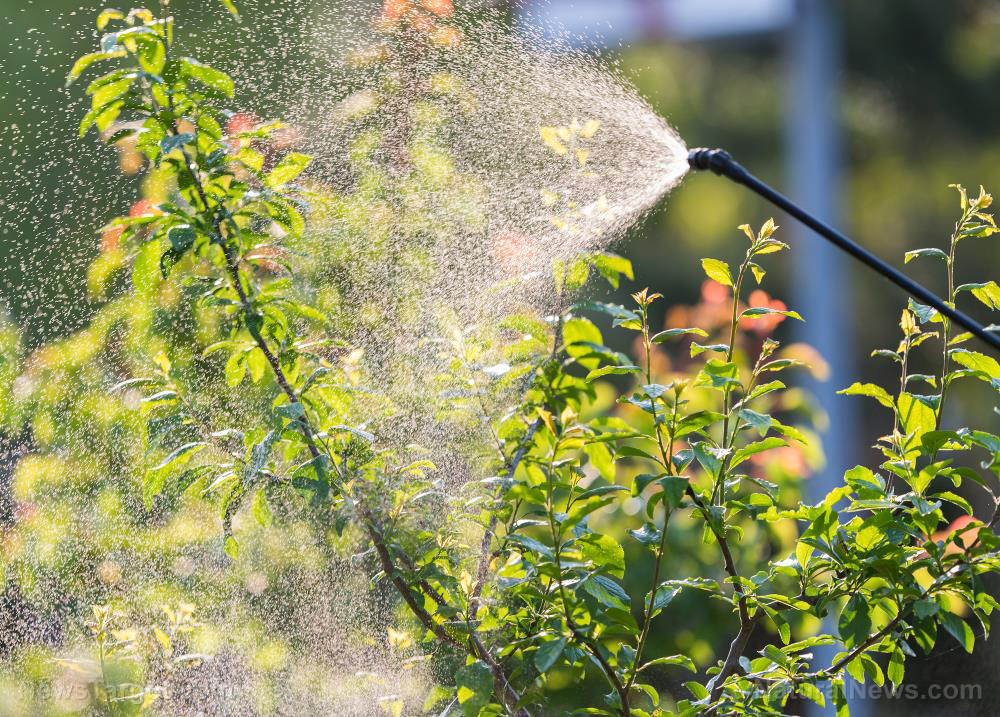Living near pesticide-treated farms raises risk of childhood brain tumors
04/17/2021 / By Divina Ramirez

Pregnant women living within 2.5 miles of agricultural lands treated with pesticides have a greater risk of their children developing central nervous system (CNS) tumors, according to a recent study.
Published on Wednesday, March 31, in the Environmental Research journal, the study also revealed that the pregnant women did not have to be working in agriculture or in close contact with pesticides for health-harming exposures to occur.
Study co-author Christina Lombardi, a public health researcher at Cedars-Sinai Medical Center in Los Angeles, said there are large numbers of pregnant women and children living close to pesticide-treated farmlands. Both mothers and children could experience adverse health effects from their proximity to those farmlands.
The study is not the first to show that pesticide use poses a threat to pregnant women and their children. But it is unique in that it showed the specific pesticides linked to the development of different kinds of CNS tumors.
Maternal exposure to pesticides linked to childhood tumors
Experts have examined pesticide exposures as risk factors for the development of childhood brain cancers. But they have yet to assess the risk of developing childhood brain cancers from exposure to specific pesticides. (Related: California is going after another dangerous pesticide: Chlorpyrifos has been linked to brain damage.)
To that end, Lombardi and her colleagues from the University of California, Los Angeles made use of the California Cancer Registry to identify cases of childhood CNS tumors in children below six years old.
Overall, the researchers found 667 cases of CNS tumors in children below six. They matched each one with 20 controls to increase the statistical power of their findings.
They then checked pesticide application records from the California Department of Pesticide Regulation‘s (CDPR) Pesticide Use Reporting (PUR) system to determine whether chemicals classified as possible carcinogens were used within 2.5 miles of the mothers’ homes at the time of the children’s births.
Results showed that maternal exposure to certain pesticides heightened the risk of certain childhood CNS tumors by 2.5 times, even if the mother was not a farmworker.
Pesticides found to increase the risk of childhood CNS tumors include thiophanate- and kresoxim-methyl, chlorothalonil, bromacil, triforine, propiconazole, dimethoate and linuron.
Co-author Julia Heck said their findings are more precise than those of previous studies on pesticide exposure, which usually grouped pesticide use into broad categories based on type, such as herbicides or insecticides.
Heck added that their results suggest that exposure to specific pesticides may best explain the results of earlier studies that reported a link between broader pesticide types and CNS tumors.
Due to the risks that pesticide exposure poses on pregnant women and children, the researchers called for policy interventions to reduce pesticide exposure among people living near farms.
“The simplest way to mitigate these risks is by reductions in exposure to pesticides,” said co-author Myles Cockburn. This can be done by restricting harmful practices like aerial spraying and air blast. Exposure to pesticides may also be reduced by promoting farming methods that limit reliance on pesticides.
More studies linking maternal pesticide exposure to greater risk of childhood brain tumors
There are several studies linking pesticide exposure to diseases in pregnant women and their children. A study published in Cancer Causes and Control in 2013 showed that women exposed to termite pesticides within a year of pregnancy were nearly twice as likely to have a child that develops a brain tumor than women not exposed to termite pesticides.
In 2017, a study published in the International Journal of Cancer showed that the residential use of pesticides was associated with a greater risk of childhood brain tumors. In particular, pregnant women who use pesticides in the home put their children at 1.4 times the risk of developing a brain tumor before the age of 15.
Go to Pesticides.news to learn more about the potential impacts of pesticide exposure on human health.
Sources include:
Submit a correction >>
Tagged Under:
This article may contain statements that reflect the opinion of the author
RECENT NEWS & ARTICLES
COPYRIGHT © 2017 PESTICIDES NEWS





















